Abstract
Levine, Elliot M. (Yale University, New Haven, Conn.) and Sofia Simmonds. Effect of cultural conditions on growth and metabolite uptake by serine-glycine auxotrophs of Escherichia coli. J. Bacteriol. 84:683–693. 1962.—A study was made of the effect of environmental conditions on the growth and metabolite uptake by Escherichia coli strain S/G (a serine-glycine auxotroph) and strain S (a serine-glycine auxotroph lacking a normal transport system for glycine). The induction in strain S of the glycine transport system, which occurs during growth in a glycine-containing medium, was prevented by l-asparagine; the “repression” appeared to result from the endogenous formation of glycine from asparagine (through homoserine and threonine) via a pathway in which serine was not an obligatory intermediate. The response of both strains to glycine appeared to be determined by the amount of l-serine or glycine present in the media (containing asparagine) in which the cells were grown prior to testing. Preliminary growth in the presence of low concentrations of exogenous glycine, which should produce cells with small endogenous “glycine-serine pools,” favored the induction of a functional glycine transport system in cells of strain S. Cells of strain S/G grown under similar conditions subsequently showed an enhanced ability to take up C14-labeled glycine. With both strains, preliminary growth conditions leading to the formation of large endogenous “glycine-serine pools” (e.g., growth in the presence of high concentrations of exogenous serine) produced cells exhibiting a glycine uptake rate that was not commensurate with the rate at which these cells grew on glycine. The growth response apparently depends not only on the ability of the cells to transport glycine but also on the size of the endogenous “glycine-serine pools”; inocula composed of cells having a limited capacity to accumulate labeled glycine showed significant growth in glycine-containing media if the cells had large “glycine-serine pools.” The growth and uptake responses to glycylglycine appear to be governed, in part, by the same factors that control the responses to free glycine.
Full text
PDF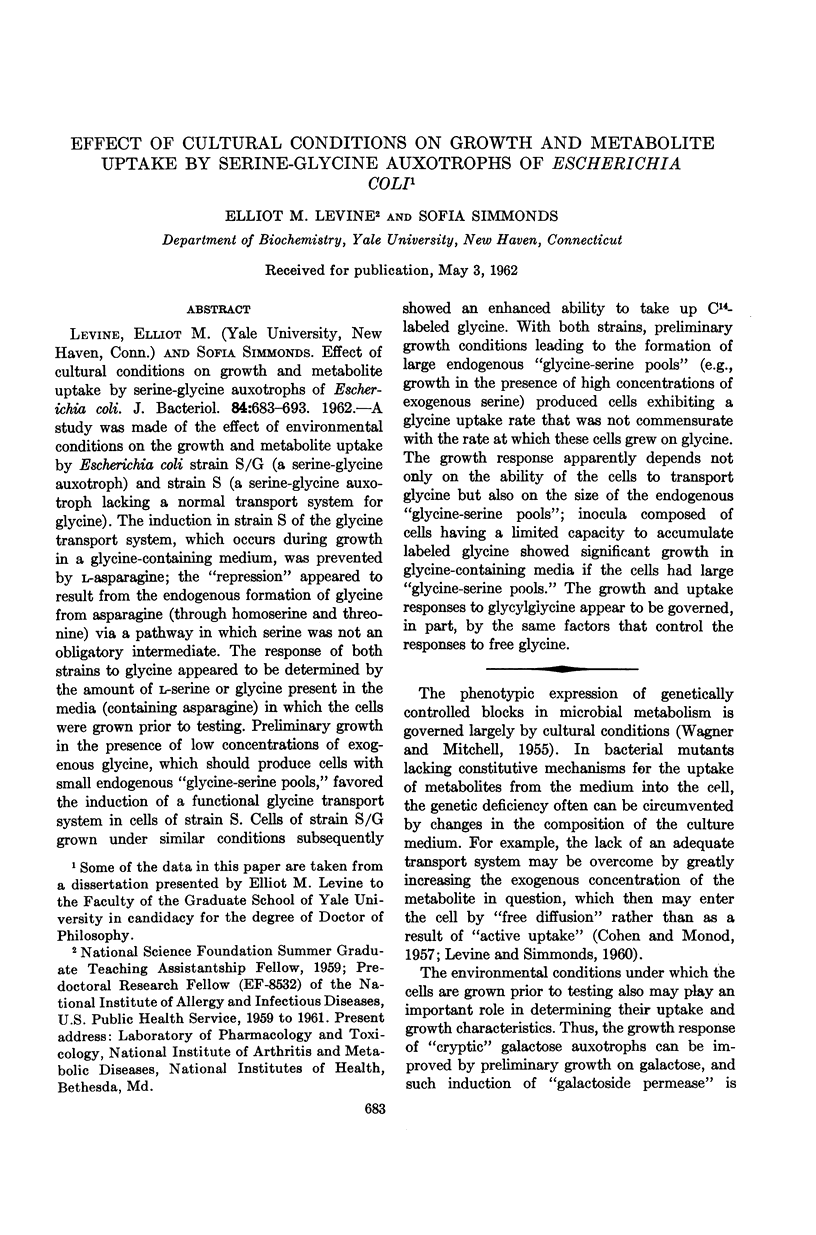
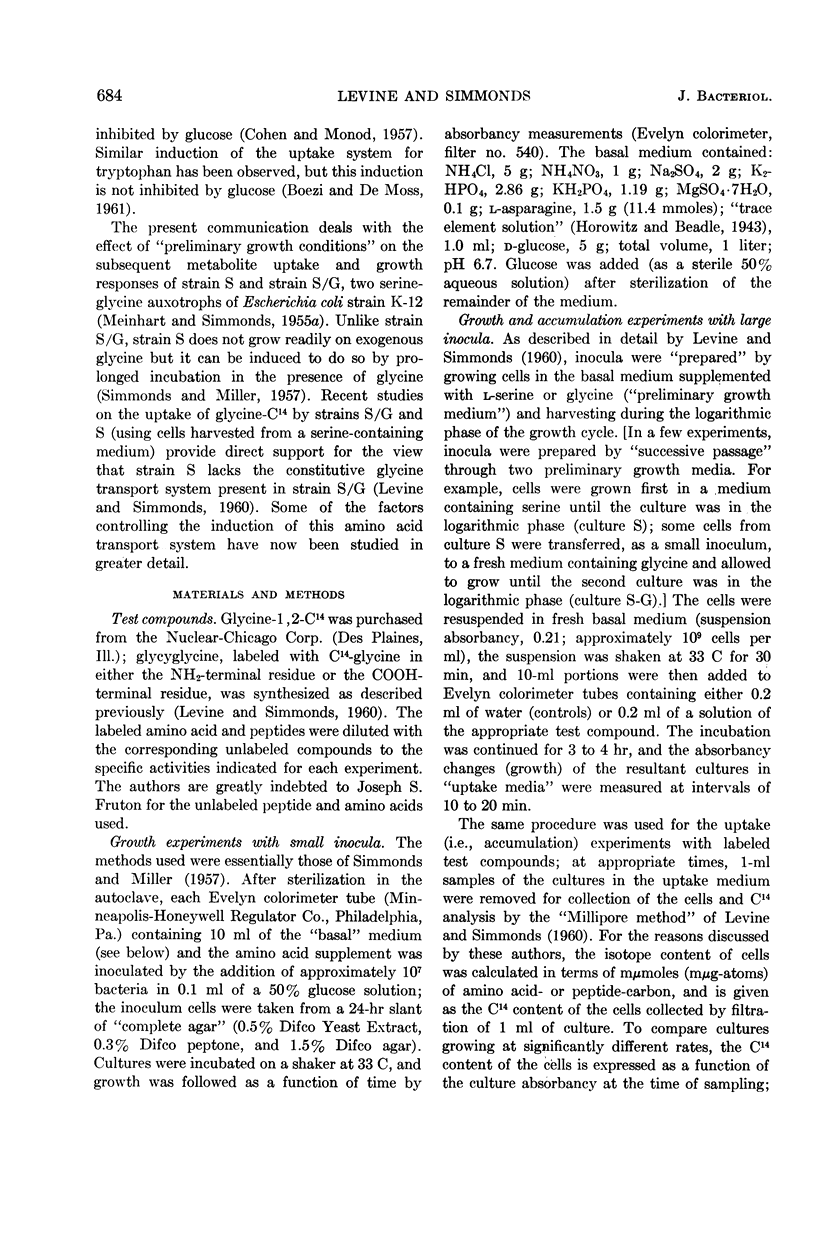
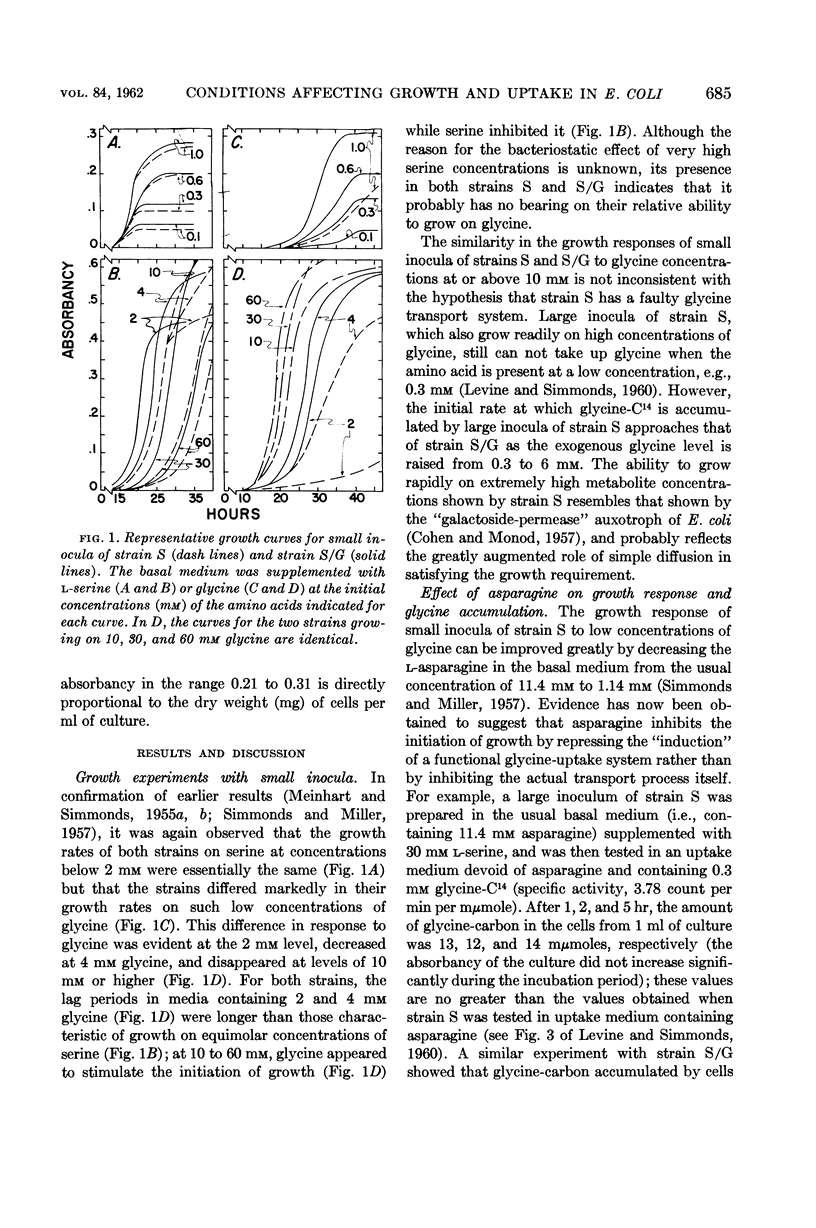
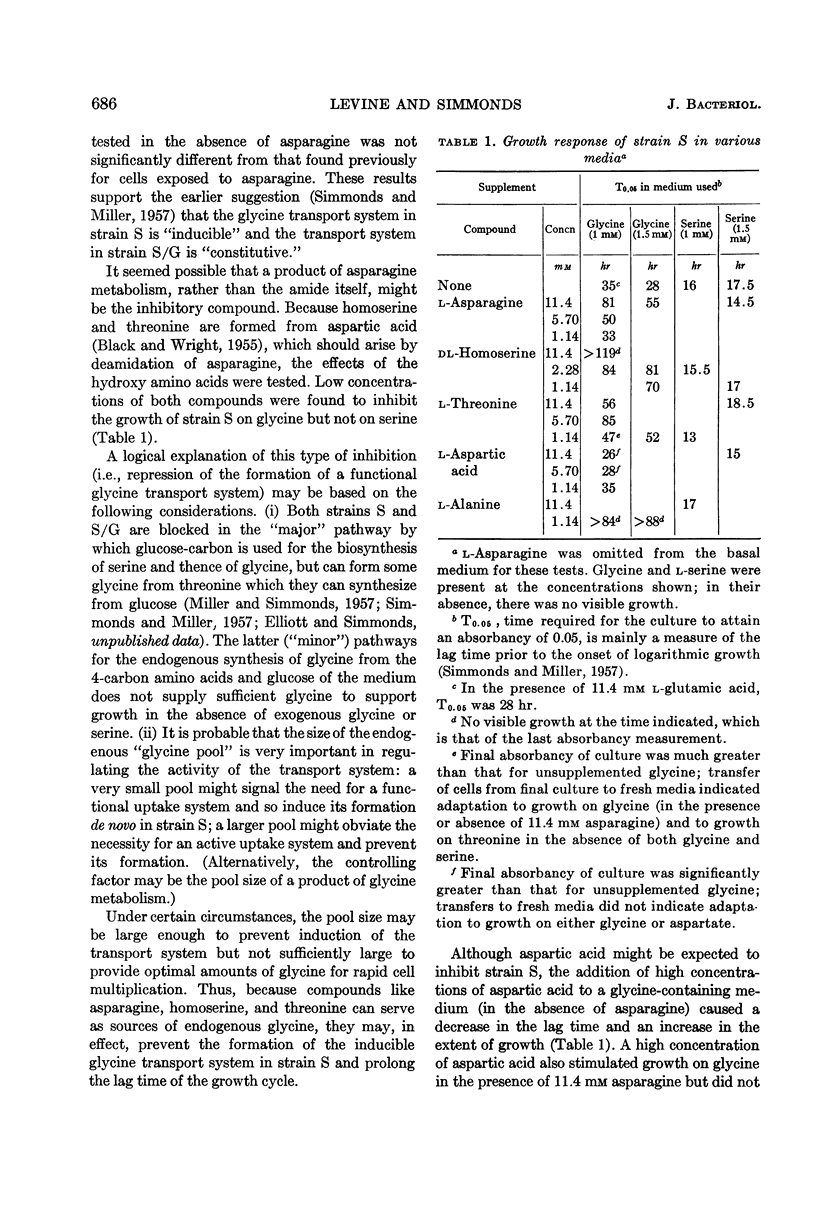

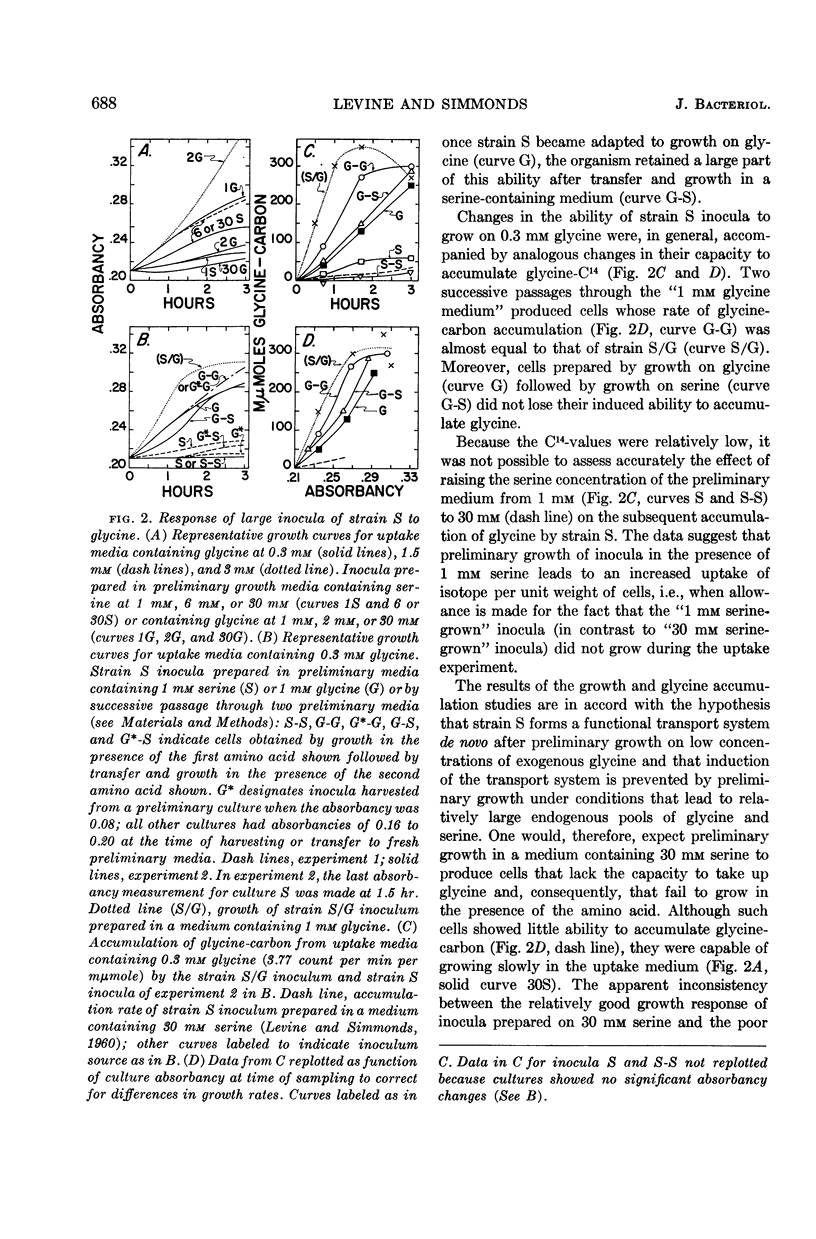

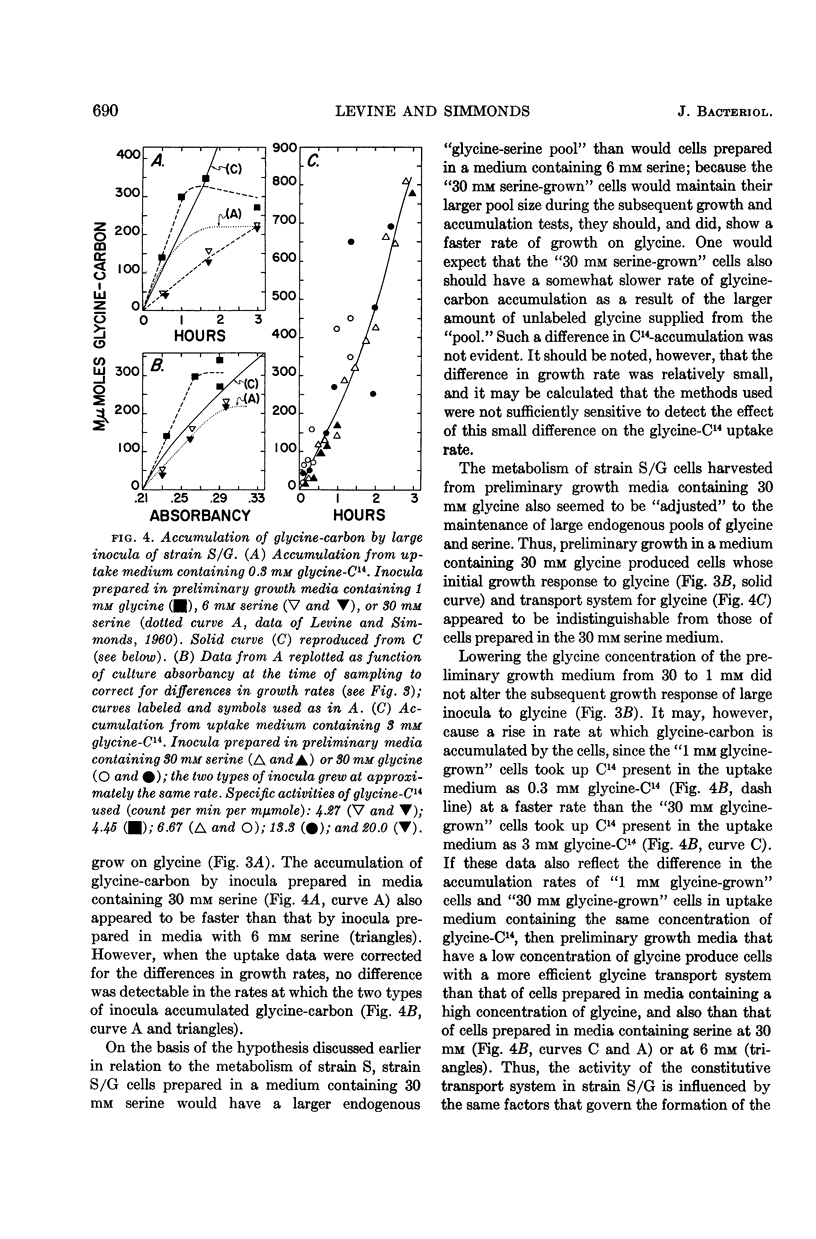
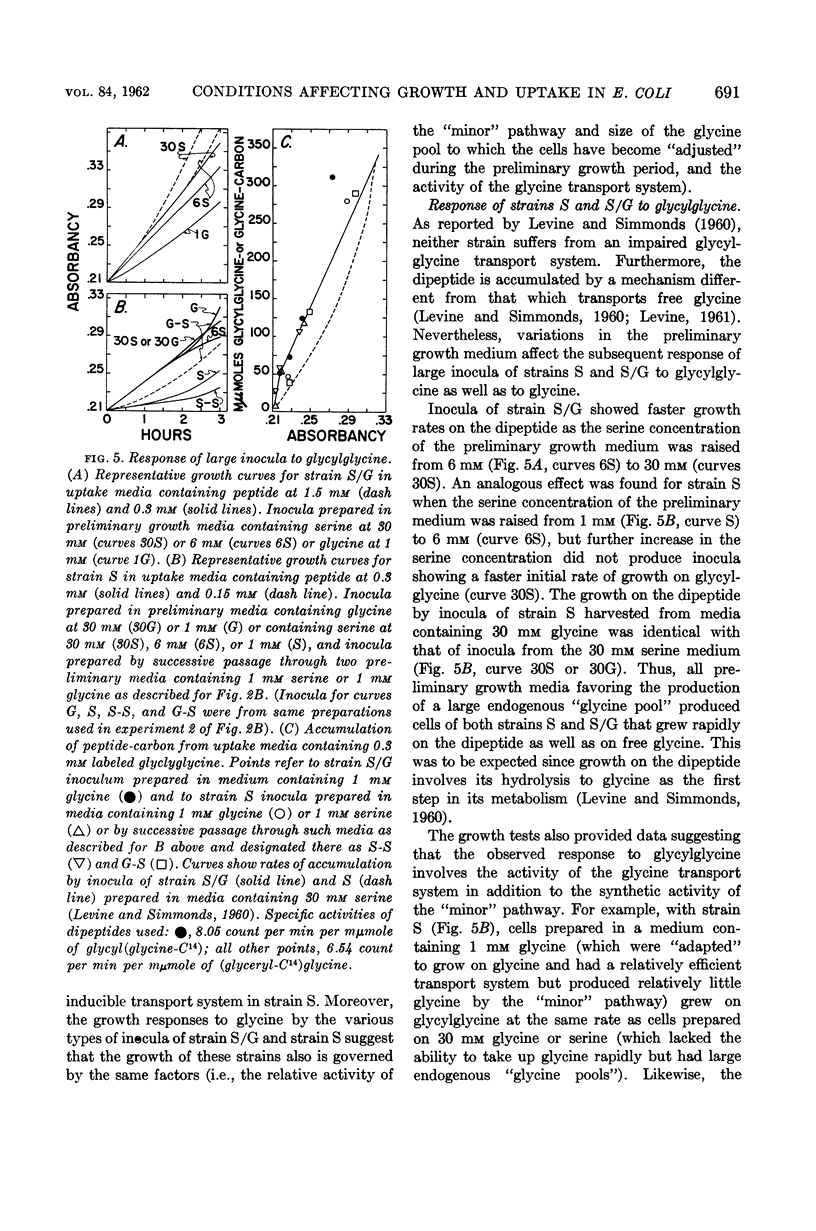
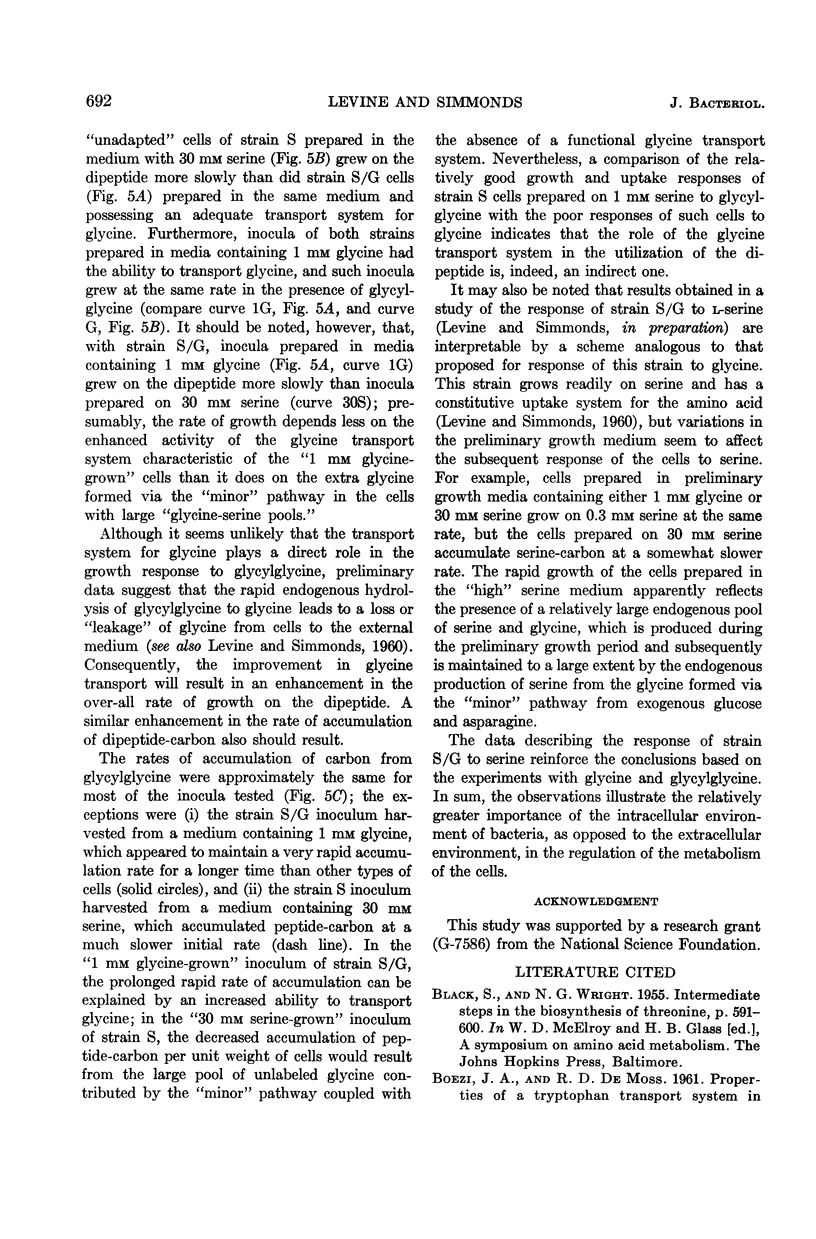
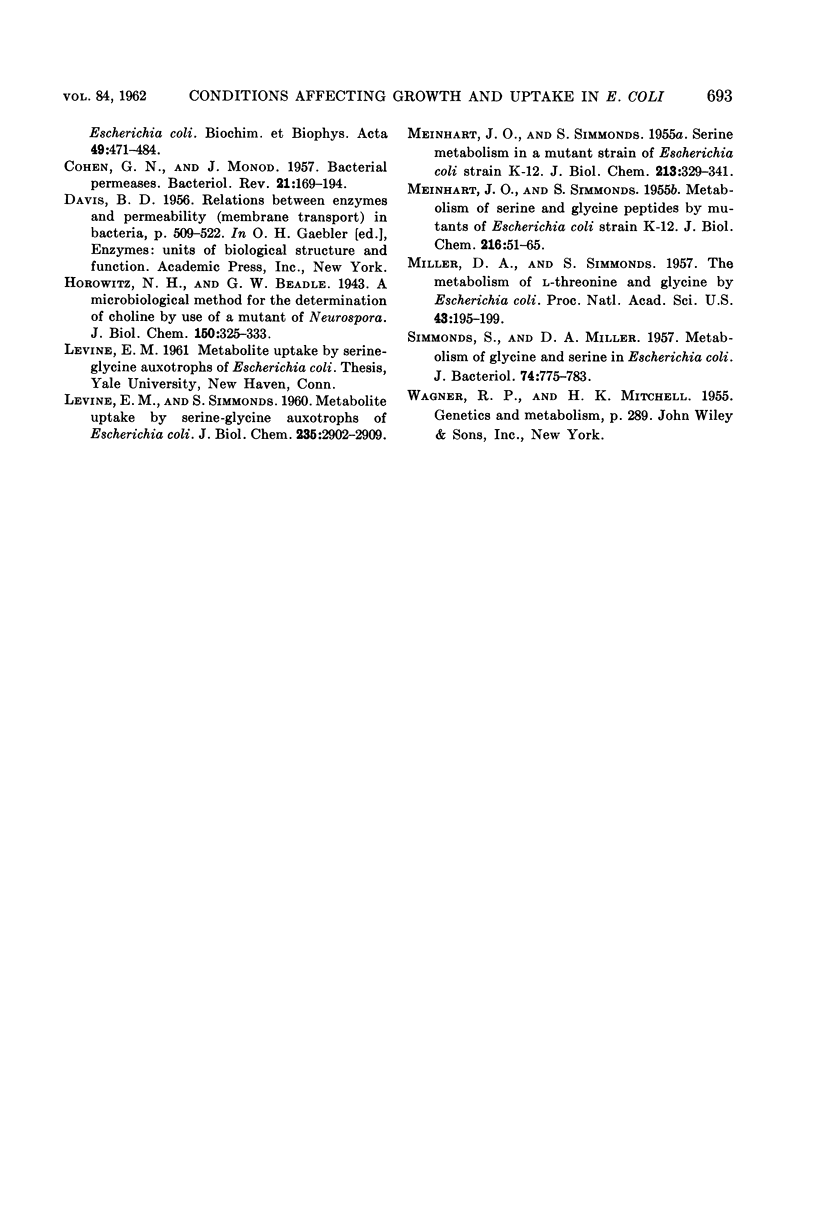
Selected References
These references are in PubMed. This may not be the complete list of references from this article.
- COHEN G. N., MONOD J. Bacterial permeases. Bacteriol Rev. 1957 Sep;21(3):169–194. doi: 10.1128/br.21.3.169-194.1957. [DOI] [PMC free article] [PubMed] [Google Scholar]
- LEVINE E. M., SIMMONDS S. Metabolite uptake by serineglycine auxotrophs of Escherichia coli. J Biol Chem. 1960 Oct;235:2902–2909. [PubMed] [Google Scholar]
- MEINHART J. O., SIMMONDS S. Metabolism of serine and glycine peptides by mutents of Escherichia coli strain K-12. J Biol Chem. 1955 Sep;216(1):51–65. [PubMed] [Google Scholar]
- MEINHART J. O., SIMMONDS S. Serine metabolism in a mutant-strain of Escherichia coli strain K-12. J Biol Chem. 1955 Mar;213(1):329–341. [PubMed] [Google Scholar]
- Miller D. A., Simmonds S. THE METABOLISM OF L-THREONINE AND GLYCINE BY Escherichia coli. Proc Natl Acad Sci U S A. 1957 Feb 15;43(2):195–199. doi: 10.1073/pnas.43.2.195. [DOI] [PMC free article] [PubMed] [Google Scholar]
- SIMMONDS S., MILLER D. A. Metabolism of glycine and serine in Escherichia coli. J Bacteriol. 1957 Dec;74(6):775–783. doi: 10.1128/jb.74.6.775-783.1957. [DOI] [PMC free article] [PubMed] [Google Scholar]


